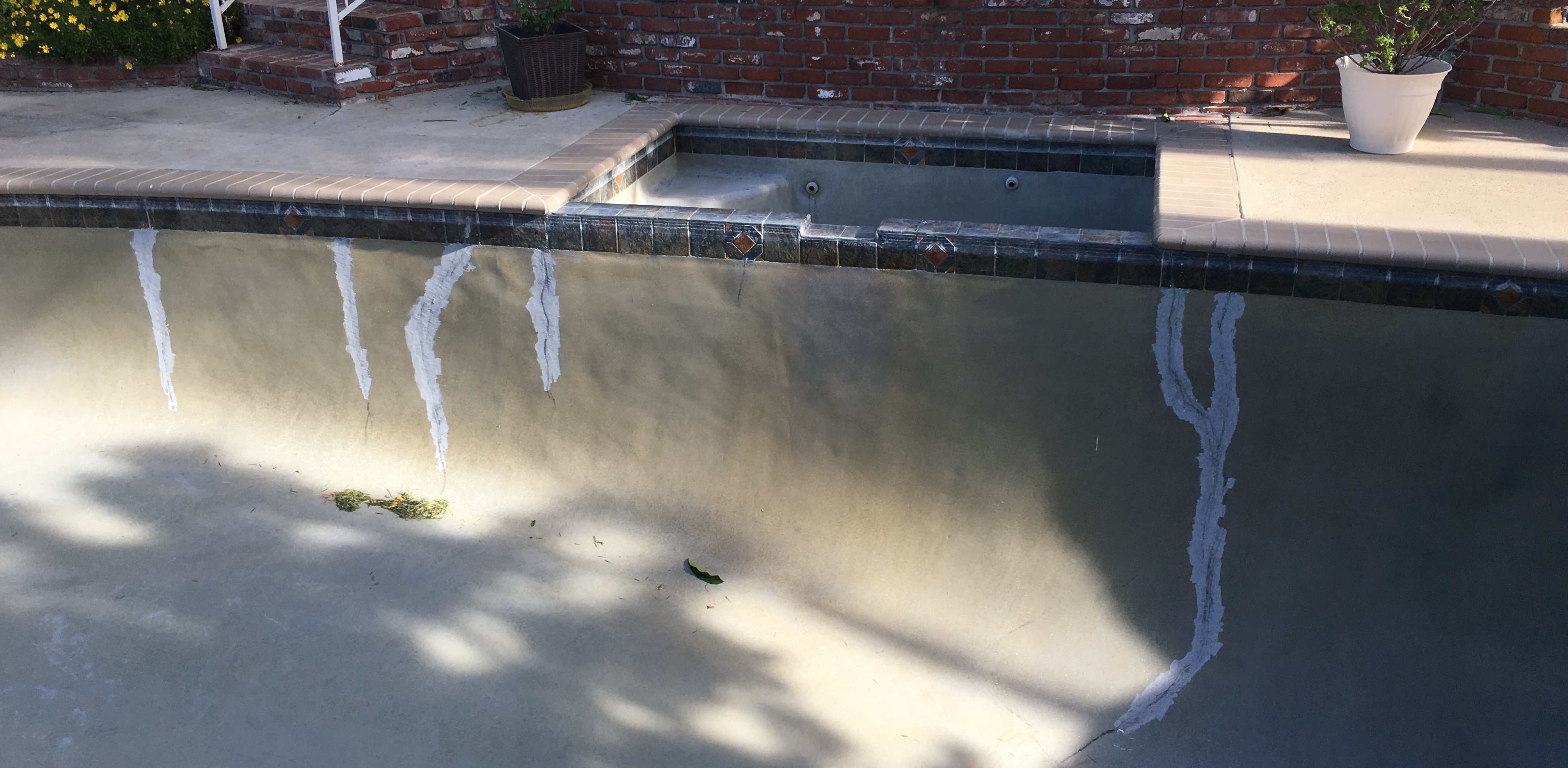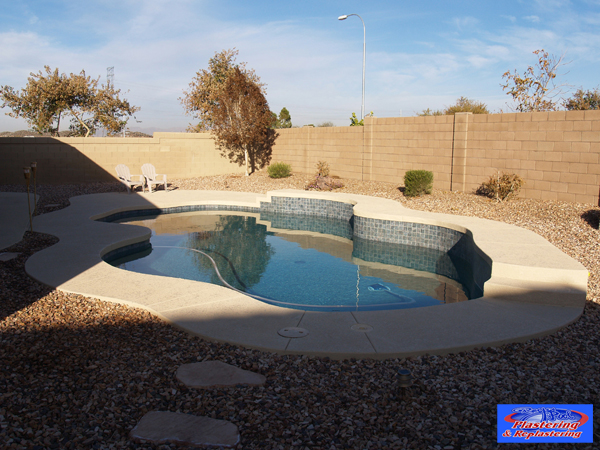
- GREY POOL PLASTER REPAIR HOW TO
- GREY POOL PLASTER REPAIR PATCH
- GREY POOL PLASTER REPAIR FULL
- GREY POOL PLASTER REPAIR PRO
If your plaster looks a little worse for wear, you may have to cut out the deteriorating parts. You’re going to have to knock and chisel these areas as well. That’s an indication that there are some air bubbles where the plaster has failed and become disconnected. If you hear a different hollow sound, then chances are you’re going to have to dig out the plaster there too. Step 2: Cut out the broken bitsĪfter you get the obvious spots, take a piece of wood or the wooden handle of your hammer and tap around the area of the obviously-damaged plaster. We’re going to be replacing it, so we want to make sure we get all the loose stuff that’s no longer working out of there. You can use a chisel and hammer or some rougher tools knock out the old plaster.
GREY POOL PLASTER REPAIR FULL
Always wear eye protection, ear protection (whether they be plugs or muffs), and it’s a good idea to have a full face shield too. Speaking of protection, whenever you’re flexing your DIY skills, you want to protect numero uno first: that’s you. This means not using your empty pool as a skate park or half pipe. The pool is meant to be full of water and anytime it’s not, you’ll need to be careful to protect your pool. However, without the water, there are more opportunities to damage the rest of the plaster. With a drained pool, you can easily get in there and take care of the damage.
GREY POOL PLASTER REPAIR HOW TO
How to Repair Plaster When Your Pool is Empty You’re about to earn your merit badge in pool plaster repair. Okay, you have all of your equipment and now you’re ready to get started. However, if you’re a DIY master and home repairs are old hat for you, read on!
GREY POOL PLASTER REPAIR PRO
Hey You! Just a quick note: if any of this sounds intimidating or you don’t feel comfortable working with these materials, it might be a smart idea to call a pro on this one.
GREY POOL PLASTER REPAIR PATCH
If you’ve ever spackled some holes in the drywall before moving out of an apartment (to try to save your deposit, right?) you already have the skills necessary to repair the plaster in your pool.īut even if you’ve never had to patch drywall holes, you’ve come to the right place. Actually Replacing Plaster In Your Pool.How to Repair Plaster When Your Pool is Full.How to Repair Plaster When Your Pool is Empty.Excessive heat will cause break down in the integrity of both pool plaster disc and pool plaster. This will keep the pool plaster disc and pool plaster from over heating. area then use a hose to wash off plaster residual material remaining. When using pool plaster disc without water it is important not overheat the disc by doing a 5 Ft. per disc depending on roughness and plaster material being removed. Disc coverage approximately 1,500 to 2,000 so. This is the base and start of your new polished (resurfaced) pool finish. By removing the top 1/16" or 1/8" of plaster you have now removed all surface imperfections, stains, and trowel marks. It is important for pool plaster surface to have a uniform texture throughout. Continue till pool plaster surface is consistent. If you feel areas that are smoother than others. You want the pool plaster to have an even slight texture surface. Then wet the surface and feel the surface with your hand. Start by processing 5 square feet before you stop. (View before polish plaster finish picture). During this step, your going to remove all surface scaling, rough aggregate, and trowel marks. Use selected 50 Grit or 70 Grit you selected to clean and hone down your pool plaster to a flat surface.





 0 kommentar(er)
0 kommentar(er)
